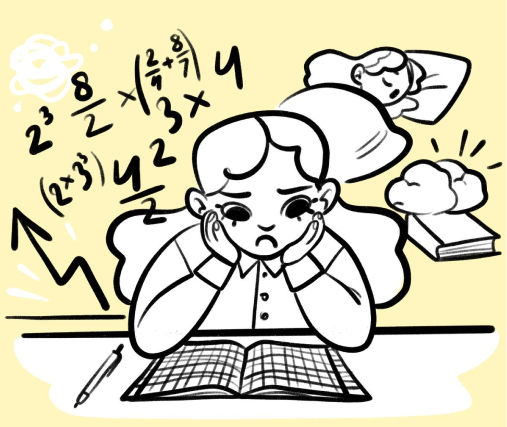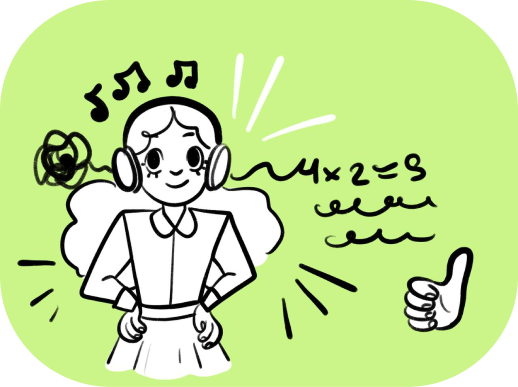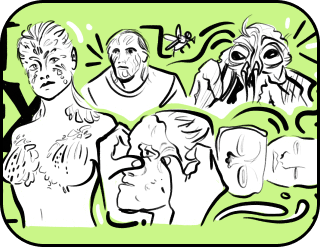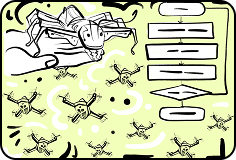How not to be afraid of mathematics and what does music have to do with it
According to the problem, we have:
– a regular class at school
– a simple example written by the teacher on the board
– an ordinary student whose name is Polly
Just a moment ago Polly was doing well – she was chatting cheerfully with her classmates, discussing the upcoming party and smiling at the boy with whom she had agreed to go to the newly opened swimming pool after school. But now she’s standing at the board, nervously rubbing her sweaty palms and can’t begin to solve the problem.
It would seem that there is nothing complicated here: 16/2(6+6). But Polly feels as if she is passing the most important exam which directly determines her life.
The whole class is looking expectantly. Polly takes in more air into her lungs, tries to force herself to write something, but the hand in which she holds the marker treacherously drops it to the floor.
It can be assumed that Polly has not prepared for the lesson and that is why she now feels insecure at the blackboard, but this is not entirely true. Polly has diligently completed all her maths homework and read her textbook. It can be assumed that Polly is a shy student and every time she appears at the board it makes her feel uncomfortable, but two lessons earlier Polly showed the class her project on creating a device for cleaning the ocean from plastic and was not at all shy.
The fact is that Polly, standing at the blackboard, is experiencing a real phenomenon of mathematical anxiety, which all scientists in the world are struggling to solve, using usual-life and technological solutions.
The cause of anxiety for the imaginary Polly in the problem statement does not necessarily have to be mathematics. For example, she might hand in blank sheets instead of an essay because of being unable to write a single line for fear of not expressing her thoughts correctly. Or she might sweat in biology class, afraid to pick up a scalpel to dissect frogs. Scientists describe anxiety associated with a variety of school subjects: from chemistry to drawing. But still, most of the research is devoted to problems with mathematics.
People started talking about a disorder associated specifically with mathematics back in the middle of the 20th century. American psychologists Ralph Dreger and Lewis Aiken described the emotional difficulties that students have when solving mathematical problems and proposed the term “the number anxiety”.
Over time, the topic became so popular that tomographs were involved in its study. In addition, the conventional opposition between types of thinking – humanitarian and non-humanitarian – is based on mathematics.
The concept of “anxiety” appeared in science a hundred years ago, and from that moment on, anxiety began to be divided into general and specific anxiety. In the first case, a person worries about a variety of, often non-existent, reasons: there is not enough money to pay off the loan for the house, something terrible could happen to loved ones, and in general, life is a continuous worry.
Private anxiety, on the contrary, arises only in specific situations. For example, while taking an exam or when communicating with the opposite sex. Usually a person is calm and confident, but then this person is suddenly overcome by panic and horror.
Scientists claim that developing the life solution, they are constantly faced with the phenomenon of a double loop, which greatly prevents them from moving forward in their research: either the inability to do mathematics causes anxiety, or, on the contrary, anxiety prevents them from being successful.
Moreover, scientists cannot come to a consensus on the very fact of increased anxiety associated with numbers.
For example, in the 70s of the last century, some scientists suggested that the female sex, in principle, knows mathematics worse and is therefore more susceptible to anxiety. But already in the 90s of the last century, scientists themselves refuted this hypothesis. Other scientists associated the anxiety with instilling in students a false premise: ‘You’re really bad at solving problems with numbers. Perhaps mathematics is not your thing. Pay attention to other sciences.’ There have been scientists who have conducted studies to find a connection between math anxiety and math teaching approaches in different countries and also failed to find anything. There are scientists who even hypothesize about the presence of mathematical anxiety in the human genome and continue to conduct research in this direction.
But no matter how far scientists go in studying the phenomenon of mathematical anxiety, each of them notes that a positive effect on people with this type of anxiety is the development of confidence in their own, not only mathematical abilities, therefore they recommend:
– getting healthy sleep;
– improving cognitive functions;
– working on attention and memory;
– doing at least a little math, fill in the knowledge gaps;
– always start life and maths lessons with those tasks that you are guaranteed to complete;
– endlessly create a situation of success around yourself.

In the usual-life solution, absolutely all scientists based on the fact that mathematical anxiety exists and it is absolutely necessary to fight it.
In the technical solution, we will proceed from the fact that anxiety is a natural reaction of a healthy body to an irritating stimulus and is an indicator of a healthy psyche.
In order for mathematics to cease to be a source of horror and become the queen of sciences, it is necessary to combine it with music classes. ‘And this will be the only correct solution,’ says Dr. Aichi Akin from the Faculty of Software Engineering at Belek University in Antalya.
Just think about it, any piece of music consists of notes and there are only seven of them. Each piece of music is divided into measures and each measure has a meter. Notes are combined into intervals, chords and consonances, and form not only a beautiful musical pattern, they create a real mathematical sequence. If you raise the sound up a semitone, the melody will change, because it will sound in a completely different key. If there is an unequal number of tones in the interval, the melody will take on an exciting tone. Based on this, any piece of music can be decomposed into both notes and mathematical symbols.
Some, even modern musicians, use Fibonacci numbers when writing music – elements of the 0, 1, 1, 2, 3, 5, 8, 13, 21, 34, 55, 89, 144, 233, 377, 610, 987, 1597, 2584, 4181, 6765, 10 946 … number sequence, in which each subsequent number equals to the sum of the previous two. These numbers are named after the medieval mathematician Leonardo of Pisa, nicknamed Fibonacci.
Some musicians, such as Johnny Lee Hooker, use thirteen-beat time, but this is quite rare. Some musicians use mathematics to determine the harmonies within a sound and work with analog equipment that uses mathematical functions such as division, multiplication, addition or subtraction to work with harmonies and other things. And, of course, almost all musicians use a metronome, which taps out real fractions.
No need to say that with the help of music in moments of anxiety, you can switch one sensory system to another.
Polly in the problem experiences anxiety from concentrating on whether she will solve the example correctly or incorrectly. If Polly, standing at the board, hummed her favorite melody, she would concentrate on the words, on imitating the singer, on not having any false notes, on her vocal cords, on anything, and at that moment she would not be afraid, because that all thoughts that she was passing the most important exam would fade into the background.
Under the guidance of Dr. Aichi Akin, students took math tests without music and after listening to music. The use of music, whether in stand-alone lessons or as part of math instruction, has been shown to be directly linked to improved academic performance over time. Integrated lessons, where music was played in the classroom simultaneously with mathematical formulas, had the greatest effect:
– about 73% of students significantly improved their abilities;
– none of the students who came to the board ever showed mathematical anxiety;
– all 100% of students noted that such mathematics classes brought them more pleasure than traditional lessons and provided additional opportunities for studying, interpreting and understanding music and mathematics;
– there are now several more composers in the world. Dr. Aichi Akin will be able to say how many exactly after students write their first piece of music.

The micro world makes particles dance to the melody of probability.
Thank you!




